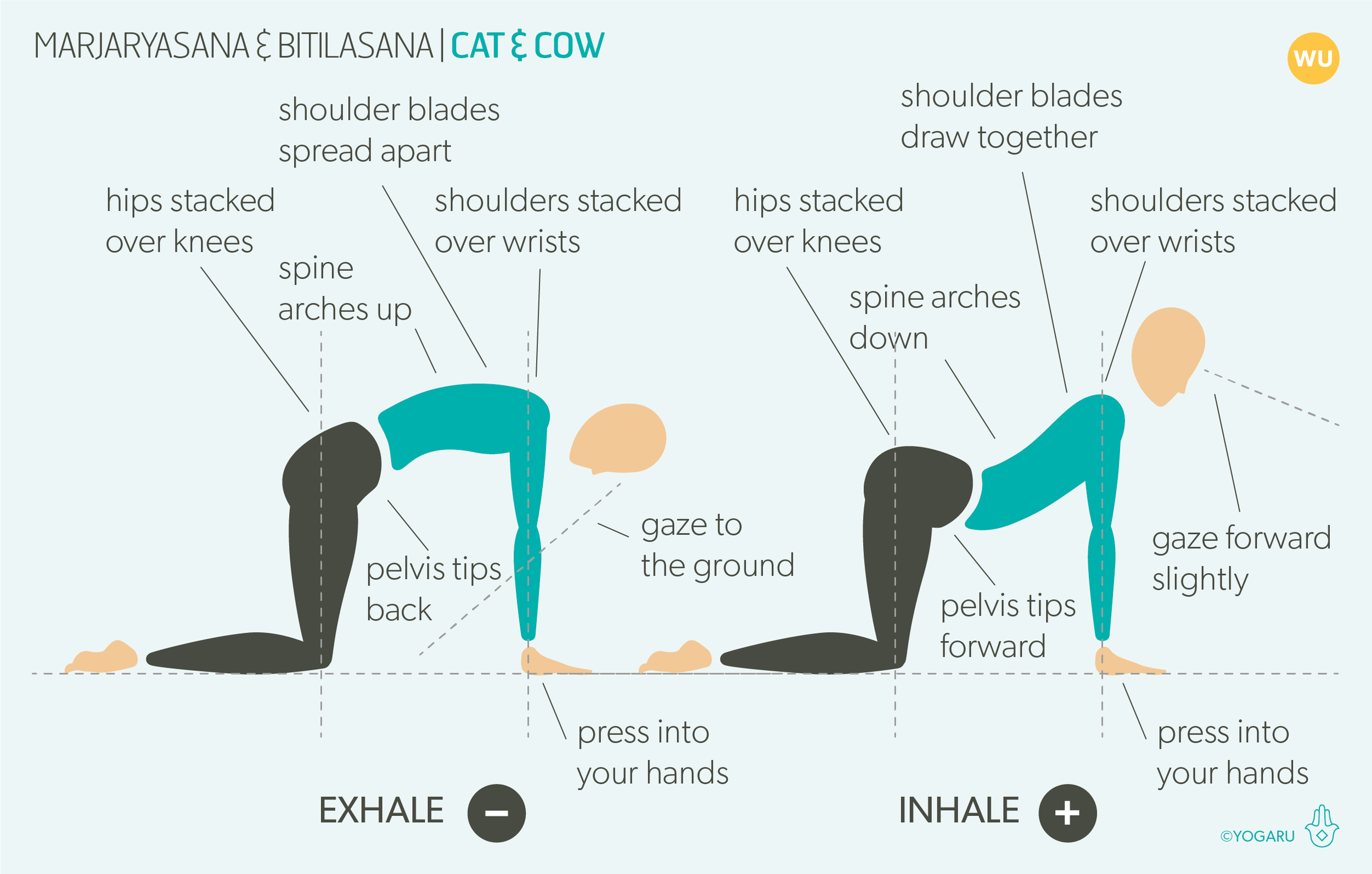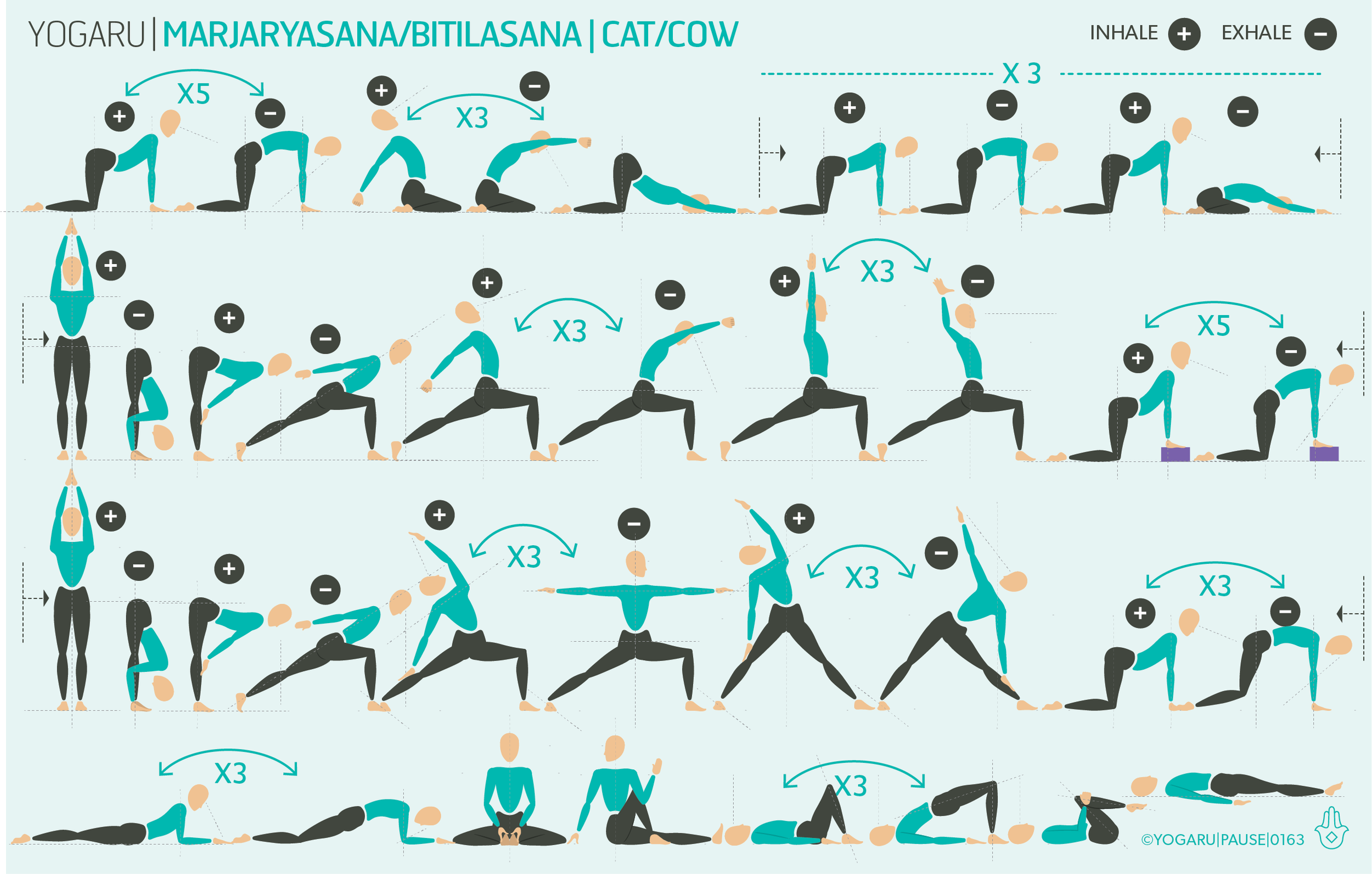THE HUB OF ALL MOVEMENT
The hip joint is a ball and socket, synovial joint, designed for heavy duty usage and weight bearing. The hips are the joint with the most bony structural differences person to person – making them the joint with the most variety in mobility potential person to person too. Tightness in the front of the hips (hip flexors) pulls the pelvis forward into an anterior tilt – causing the lower back to overarch, the upper chest to puff and the head to tilt back. Tightness in the back of the hips (hip extensors) pulls the pelvis backwards into a posterior tilt – causing the lower back to flatten back, the upper back to overarch forward and the head to tilt forward. Balance and harmony in the hips unifies the upper and lower body and attributes to better fluid movement of the spine too. The hips like to be perfectly stacked over the foundation of our feet, to avoid unnecessary stress on the spine and allow the natural curves of the vertebrae to function properly as a shock absorption system.
THE STRUCTURE OF THE HIPS
The hips are made to be durable and to absorb the forces of gravity and body weight. The socket is much deeper than the shoulder joint which gives it slightly less mobility but much greater stability. The socket is made of several layers, each with their own important job. Starting with the deepest layer of the socket you have the bone of the hip. This bone is covered by a ‘c’ shaped fibrous lining which facilitates gliding called the cartilage. Around the edge of the socket is a rim, which creates a seal and deepens the socket, called the labrum. Then there is a tube like fibrous connective tissue, attached to the rim of the socket and around the head of the femur, which secretes synovial fluid, called the capsule. Next you have the ligaments, holding bone to bone to stabilise the joint. Finally you have many layers of tendons and muscles which facilitate movement of the hip joint.
The hips are made up of two bones – the pelvis (illium, pubis & ischium) and the leg bone (femur). The ball and socket joint is made up the top of the leg bone, called the head of the femur, and the socket which sits on the lower part of the pelvis, called the acetabulum.
THE MOVEMENTS OF THE HIPS
Below there is an illustration of the six movements of the hip joint:
Flexion – where the leg lifts forward and up.
Extension – where the leg reaches back and up.
Abduction – where the leg moves away from the midline.
Adduction – where the leg moves towards the midline.
Internal rotation – where the leg rotates inwards.
External rotation – where the leg rotates outwards.
THE MUSCLES OF THE HIPS
For those of you who love to go deeper into the actions of the hip joint I have also listed the six movements with their assisting muscles in the chart below. Grouping the muscles to the action rather than looking at each muscle in isolation gives a more experiential understanding.
EXPLORING THE HIPS IN YOUR PRACTICE
If you observe your habitual postural habits, in standing and sitting, you most probably find you are inclined to tip your pelvis slightly forward or back. Working with your hips in your practice will help you become more aware of your posture and help release the muscles of your hips that might be tight, and strengthen the muscles that might be weak.
This sequence will mobilise your hips in all directions and leave them feeling strong and stable, with lovely freedom of movement too. Bring your full attention to the hips as you move through the sequence. Notice what your strengths and weaknesses are with regards to the six different movements. It is very normal to have one movement that you move more freely in and one that feels a bit more sticky or challenging for you.
ALIGNMENT CUES
This sequence will bring you through the six movements of the hips – flexion, extension, abduction, adduction, internal and external rotation. Focus your full attention on your hips throughout this practice and move slowly into and out of each pose. See can you notice what areas of the hip are being stretched and which are being strengthened as you move. The sequence is numbered to highlight sample poses from each movement of the hips to give you a better understanding of the role of the hip joint in the pose. Below are the six asana which are highlighted in the sequence where you will feel the six movement of the hips:
1 – Flexion - Standing lifting the leg forward, front leg in Ashta Chandrasana/Eight Crescent Moon, Knee to chest.
2 – Extension - Standing lifting the leg back, back leg in Ashta Chandrasana/Eight Crescent Moon.
3 – Abduction - Half kneeling leg lifts, Parsvakonasana/Side Angle, Utkata Konasana/Goddess.
4 – Adduction - Ardha Matsyendrasana/Half Lord of the Fish, Gomukhasana/Cow Face.
5 – Internal rotation - Back leg in deer pose.
6 – External rotation - Virabhadrasana II/Warrior II, Parsvakonasana/Side Angle, Utkata Konasana/Goddess, Gomukhasana/Cow Face.
To save the images for personal use click and hold down the image until the ‘save image’ option appears; on Mac hold down ‘control’ and click the image to get the option box; on PC right click on the image to get the option box. Scroll down in the ‘option box’ and click ‘save image’.
Ruth Delahunty Yogaru








